API RP 2A-WSD-2007 Recommended Practice for Planning, Designing and Constructing Fixed Offshore Platforms-Working Stress Design
Подождите немного. Документ загружается.

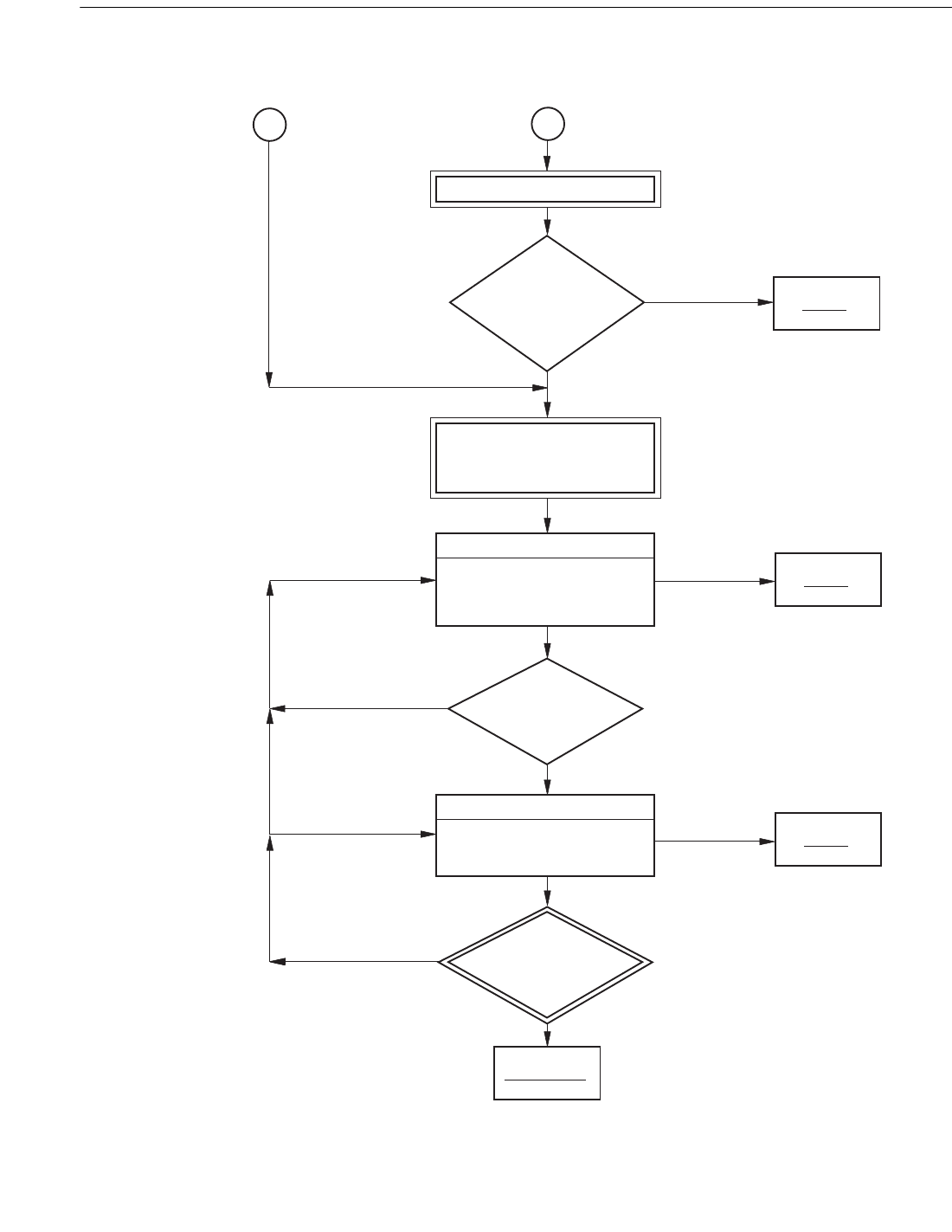
RECOMMENDED PRACTICE FOR PLANNING, DESIGNING AND CONSTRUCTING FIXED OFFSHORE PLATFORMS—WORKING STRESS DESIGN 119
Figure 17.5.2—Platform Assessment Process—Metocean Loading (Continued)
DESIGN BASIS CHECK
All analysis to be conducted using
present RP 2A procedures, as
modified in Section 17.7
Platform
passes
assessment
Platform
passes
assessment
Platform
passes
assessment
Platform
does not pass
assessment
Design Level Analysis
Perform design level analysis
applying proper loading from
Table 17.5.2a, b
(see Notes 1, 2 and Section 17.7)
Ultimate Strength Analysis
Perform ultimate strength analysis
applying proper loading from
Table 17.5.2a, b (see Section 17.7)
Implement
mitigation alternatives?
(see Section 17.8)
Implement
mitigation alternatives?
(see Section 17.8)
Is
platform designed
to 9th ed. or later with
reference level environ-
mental loading?
(see Section
17.6)
ANALYSIS CHECKS
Yes
Passes
Passes
Fails
No
Yes
No
Yes
No
B
A
Copyright American Petroleum Institute
Provided by IHS under license with API
Licensee=Indonesia location/5940240008
Not for Resale, 10/22/2008 00:07:12 MDT
--`,,```,,,`,,,,,,,,,,,,,,`,``,`-`-`,,`,,`,`,,`---

120 API RECOMMENDED PRACTICE 2A-WSD
mental conditions. The reserve strength ratio (RSR) is used as
a check of ultimate strength (see Table 17.5.2b). RSR is
defined as the ratio of a platform’s ultimate lateral load carry-
ing capacity to its 100-year L-1 environmental condition lat-
eral loading, computed using present API Recommended
Practice 2A criteria for new design as contained in Section 2.
Further discussion of metocean criteria is provided in Section
17.6.
The assessment process described herein is applicable for
areas outside of the U.S., with the exception of the use of the
reduced criteria which are applicable for indicated U.S. areas
only. See also Section C17.1.
Platforms that have no significant damage, have an ade-
quate deck height for their category (see Figures 17.6.2-2b,
17.6.2-3b, and 17.6.2-5b), and have not experienced signifi-
cant changes from their design premise may be considered to
be acceptable, subject to either of the following conditions:
1. Minimum consequence: If the platform is categorized
as having minimum consequence (Level L-3,
unmanned and low consequence of failure) the plat-
form passes the assessment.
2. Design basis check: If the platform is located in the
U.S. Gulf of Mexico and was designed to the 9th Edi-
tion of API Recommended Practice 2A (1977) or later,
the platform passes the assessment. However, in this
case it must also be demonstrated that reference level
hydrodynamic loading was used for platform design.
The procedure to demonstrate that 9th Edition refer-
ence level forces were applied during design is
described in Section 17.6.
Significant damage or change in design premise is defined
in Section 17.2.6.
For all other platforms, the following applies:
3. Design level analysis: Design level analysis proce-
dures are similar to those for new platform design,
including the application of all safety factors, the use of
nominal rather than mean yield stress, etc. Reduced
metocean loading, relative to new design requirements,
are referenced in Figure 17.5.2 and Section 17.6.
Design level analysis requirements are described in
17.7.2. For minimum consequence platforms with
damage or increased loading, an acceptable alternative
to satisfying the design level analysis requirement is to
demonstrate that the damage or increased loading is
not significant relative to the as-built condition, as
defined in 17.2.6. This would involve design level
analyses of both the existing and as-built structures.
4. Ultimate strength analysis: Ultimate strength analysis
reduces conservatism, attempting to provide an unbi-
ased estimate of platform capacity. The ultimate
strength of a platform may be assessed using inelastic,
static pushover analysis. However, a design level anal-
ysis with all safety factors and sources of conservatism
removed is also permitted, as this provides a conserva-
tive estimate of ultimate strength. See Section C17.7.3
.for further explanation. In both cases the ultimate
strength metocean criteria should be used. Ultimate
strength analysis requirements are described in 17.7.3.
For minimum consequence platforms with damage or
increased loading, an acceptable alternative to the ulti-
mate strength requirement is to demonstrate that the
damage or increased loading is not significant relative
to the as-built condition as defined in 17.2.6. This
would involve ultimate strength analyses of both the
existing and as-built structures.
Several investigators have developed simplified proce-
dures for evaluation of the adequacy of existing platforms. To
use these procedures successfully requires intimate knowl-
edge of the many assumptions upon which they are based, as
well as a thorough understanding of their application. The use
of environmental loadings in simplified analysis are at the
discretion of the operator; however, the simplified analysis
method used must be validated as being more conservative
than the design level analysis.
17.5.3 Assessment for Seismic Loading
For platforms with exposure categories noted in Section
1.7 (excluding the nonapplicable manned-evacuated cate-
gory) that are subject to seismic loading in seismic zones 3, 4,
and 5 (see Section C2.3.6c), the basic flow chart shown in
Figure 17.5.2 is applicable to determine fitness for seismic
loading with the following modifications:
1. Assessment for seismic loading is not a requirement
for seismic zones 0, 1, and 2 (see Section C2.3.6c).
2. Assessment for metocean loading should be performed
for all seismic zones.
3. Perform assessment for ice loading, if applicable.
4. Design basis check: For all exposure categories
defined in Section 1.7, platforms designed or recently
assessed in accordance with the requirements of API
Recommended Practice 2A, 7th Edition (1976), which
required safety level analysis (referred to as “ductility
level analysis” in subsequent editions), are considered
to be acceptable for seismic loading, provided that:
a. No new significant fault has been discovered in the
area.
b. No new data indicate that a current estimate of
strength level ground motion for the site would be
significantly more severe than the strength level
ground motion used for the original design.
00
00
Copyright American Petroleum Institute
Provided by IHS under license with API
Licensee=Indonesia location/5940240008
Not for Resale, 10/22/2008 00:07:12 MDT
No reproduction or networking permitted without license from IHS

RECOMMENDED PRACTICE FOR PLANNING, DESIGNING AND CONSTRUCTING FIXED OFFSHORE PLATFORMS—WORKING STRESS DESIGN 121
c. Proper measures have been made to limit the life
safety risks associated with platform appurte-
nances as noted in 2.3.6e.2.
d. The platforms have no significant unrepaired
damage.
e. The platforms have been surveyed.
f. The present and/or anticipated payload levels are
less than or equal to those used in the original
design.
5. Design level analysis: The design level analysis box in
Figure 17.5.2 is not applicable to seismic assessment
(see Section 17.6.3).
6. Ultimate strength analysis: Level A-1 platforms that do
not meet the screening criteria may be considered ade-
quate for seismic loading provided they meet the life
safety requirements associated with platform appurte-
nances as noted in 2.3.6e.2, and it can be suitably
demonstrated by dynamic analysis using best estimate
resistances that these platforms can be shown to with-
stand loads associated with a median 1,000-year return
period earthquake appropriate for the site without sys-
tem collapse.
Assessments of Level A-3 platforms also require satisfying
the platform appurtenance requirements of 2.3.6e.2. How-
ever, A-3 platforms must be suitably demonstrated by
dynamic analysis using best estimate resistance values that
the platform can withstand earthquake loads associated with
only a median 500-year return period event appropriate for
the site without system collapse. A validated simplified anal-
ysis may be used for seismic assessment (see Section 17.5.2).
It must be demonstrated that the simplified analysis will be
more conservative than the ultimate strength analysis.
17.5.4 Assessment for Ice Loading
For all exposure categories of platforms subject to ice load-
ing, the basic flowchart shown in Figure 17.5.2 is applicable
to determine fitness for ice loading with the following modifi-
cations:
1. Perform assessment for metocean loading if applica-
ble. Note this is not required for Cook Inlet, Alaska, as
ice forces dominate.
2. Perform assessment for seismic loading if applicable.
3. Design basis check: All categories of platforms as
defined in Section 1.7 that have been maintained and
inspected, have had no increase in design level loading,
are undamaged and were designed or previously
assessed in accordance with API Recommended Prac-
tice 2N, 1st Edition (1988) or later, are considered to be
acceptable for ice loading.
4. Design level analysis: Level A-1 platforms that do not
meet the screening criteria may be considered adequate
for ice loading if they meet the provision of API Rec-
ommended Practice 2N, 1st Edition (1988), using a
linear analysis with the basic allowable stresses
referred to in Section 3.1.2 increased by 50 percent.
5. Level A-3 platforms that do not meet the screening cri-
teria may be considered adequate for ice loading if they
meet the provision of API Recommended Practice 2N,
1st Edition (1988), using a linear analysis with the
basic allowable stresses referred to in Section 3.1.2
increased by 70 percent, which is in accordance with
2.3.6.c4 and 2.3.6.e.
6. Ultimate strength analysis: Platforms that do not meet
the design level analysis requirements may be consid-
ered adequate for ice loading if an ultimate strength
analysis is performed using best estimate resistances,
and the platform is shown to have a reserve strength
ratio (RSR) equal to or greater than 1.6 in the case of
A-1 platforms, and a RSR equal to or greater than 0.8
in the case of A-2 and A-3 platforms. RSR is defined
as the ratio of platform ultimate lateral capacity to the
lateral loading computed with API Recommended
Practice 2N, 1st Edition (1988), procedures using the
design level ice feature provided in Section 3.5.7 of
Recommended Practice 2N.
A validated simplified analysis may be used for assessment
of ice loading (see Section 17.5.2). It must be demonstrated
that the simplified analysis will be as or more conservative
than the design level analysis.
17.6 METOCEAN, SEISMIC, AND ICE CRITERIA/
LOADS
17.6.1 General
The criteria/loads to be utilized in the assessment of exist-
ing platforms should be in accordance with Section 2.0 with
the exceptions, modifications, and/or additions noted herein
as a function of assessment category defined in Section 17.3
and applied as outlined in Section 17.5.
17.6.2 Metocean Criteria/Loads
The metocean criteria consist of the following items:
1. Omni-directional wave height versus water depth.
2. Storm tide (storm surge plus astronomical tide).
3. Deck height.
4. Wave and current direction.
5. Current speed and profile.
6. Wave period.
7. Wind speed.
05
05
05
Copyright American Petroleum Institute
Provided by IHS under license with API
Licensee=Indonesia location/5940240008
Not for Resale, 10/22/2008 00:07:12 MDT
--`,,```,,,`,,,,,,,,,,,,,,`,``,`-`-`,,`,,`,`,,`---

122 API RECOMMENDED PRACTICE 2A-WSD
The criteria are specified according to geographical region.
At this time, only criteria for the U.S. Gulf of Mexico and
three regions off the U.S. West Coast are provided. These
regions are Santa Barbara, San Pedro Channels, and Central
California (for platforms off Point Conception and Arguello).
No metocean criteria are provided for Cook Inlet because ice
forces dominate.
The criteria are further differentiated according to assess-
ment category (that is, consequence of failure and life safety
category combination) and type of analysis (that is, design
level or ultimate strength).
Figures are provided that show metocean criteria in the
Gulf of Mexico for each Assessment Category. The figures
are valid down to water depths of 30 to 40 feet, depending
upon where the criteria curve on each figure begins. The
figures should not be used for water depths less than this
since metocean conditions are difficult to predict in shal-
low water due to the effects of wave shoaling, bottom
soils, coastline geometry and other factors. Development
of the appropriate criteria for shallow water depths should
be part of a specialist study by suitably qualified metocean
personnel.
In some shallow water areas, platforms with large decks
may be controlled by wind loads instead of wave and/or cur-
rent loads. In such cases, the recommendations contained in
Section 2.3.4.c7 Associated Wind Speed, should also be con-
sidered during the assessment process.
Wave/wind/current force calculation procedures for plat-
form assessment have to consider two cases:
Case 1: wave clears the underside of the cellar deck.
Case 2: wave inundates the cellar deck; ultimate strength
analyses must be performed.
For Case 1, the criteria are intended to be applied with
wave/wind/current force calculation procedures specified in
2.3.1 through 2.3.4, except as specifically noted in 17.6.2.
For Case 2, the procedures noted in Case 1 apply in addi-
tion to the special procedures for calculating the additional
wave/current forces on platform decks, provided in C17.6.2.
The following sections define the guideline metocean
criteria and any special force calculation procedures for
various geographical regions. Platform owners may be able
to justify different metocean criteria for platform assess-
ment than the guideline criteria specified herein. However,
these alternative criteria must meet the following condi-
tions:
1. Criteria must be based on measured data in winter
storms and/or hurricanes, or on hindcast data from
numerical models and procedures that have been thor-
oughly validated with measured data.
2. Extrapolation of storm data to long return periods and
determination of “associated” values of secondary met-
ocean parameters must be done with defensible
methodology.
3. Derivation of metocean criteria for platform assess-
ment must follow the same logic as used to derive the
guideline parameters provided herein. This logic is
explained in “Metocean Criteria/Loads for use in
Assessment of Existing Offshore Platforms,” by C.
Petrauskas, et al. [6].
17.6.2.a U.S. Gulf of Mexico Criteria
Criteria for platforms in the U.S. Gulf of Mexico include:
1. Metocean systems: Both hurricanes and winter storms
are important to the assessment process. In calculating
wave forces based on Section 2.3, a wave kinematics
factor of 0.88 should be used for hurricanes, and 1.0
for winter storms.
2. Deck height check: The deck heights shown in Figures
17.6.2-2b, 17.6.2-3b, and 17.6.2-5b are based on the
ultimate strength analysis metocean criteria for each of
the exposure categories. Specifically, the minimum
deck height above MLLW measured to the underside
of the cellar deck main beams is calculated as follows:
a. Minimum deck height = crest height of ultimate
strength analysis wave height and associated wave
period + ultimate strength analysis storm tide.
b. The wave crest heights are calculated using the
wave theory as recommended in 2.3.1b.2.
c. If this criterion for the minimum deck height, mea-
sured to the minimum elevation of the underside of
the cellar deck, is not satisfied, an ultimate strength
analysis must be conducted with proper representa-
tion of hydrodynamic deck forces using the
procedure described in C17.6.2.
3. Design basis check (for structures designed to Rec-
ommended Practice 2A, 9th Edition or later): For all
exposure categories, a single vertical cylinder may
be used to determine if the platform satisfies the 9th
Edition reference
level force. Figure 17.6.2-1 shows
the 9th Edition wave forces as a function of water
depth for diameters of 30 in., 48 in., 60 in., and 72 in.
The forces are calculated using the wave theory as
recommended in 2.3.1b.2. Consistent with the 9th
Edition, the current is zero and no marine growth is
used. The drag coefficient is 0.6 and the inertia coef-
ficient is 1.5.
To verify that the platform was designed for 9th
Edition reference level loads, the forces on the single
cylinder need to be calculated using the original design
wave height, wave period, current, tide, drag and iner-
tia coefficients, wave-plus-current kinematics, and
marine growth thickness. The cylinder diameter should
05
Copyright American Petroleum Institute
Provided by IHS under license with API
Licensee=Indonesia location/5940240008
Not for Resale, 10/22/2008 00:07:12 MDT
--`,,```,,,`,,,,,,,,,,,,,,`,``,`-`-`,,`,,`,`,,`---
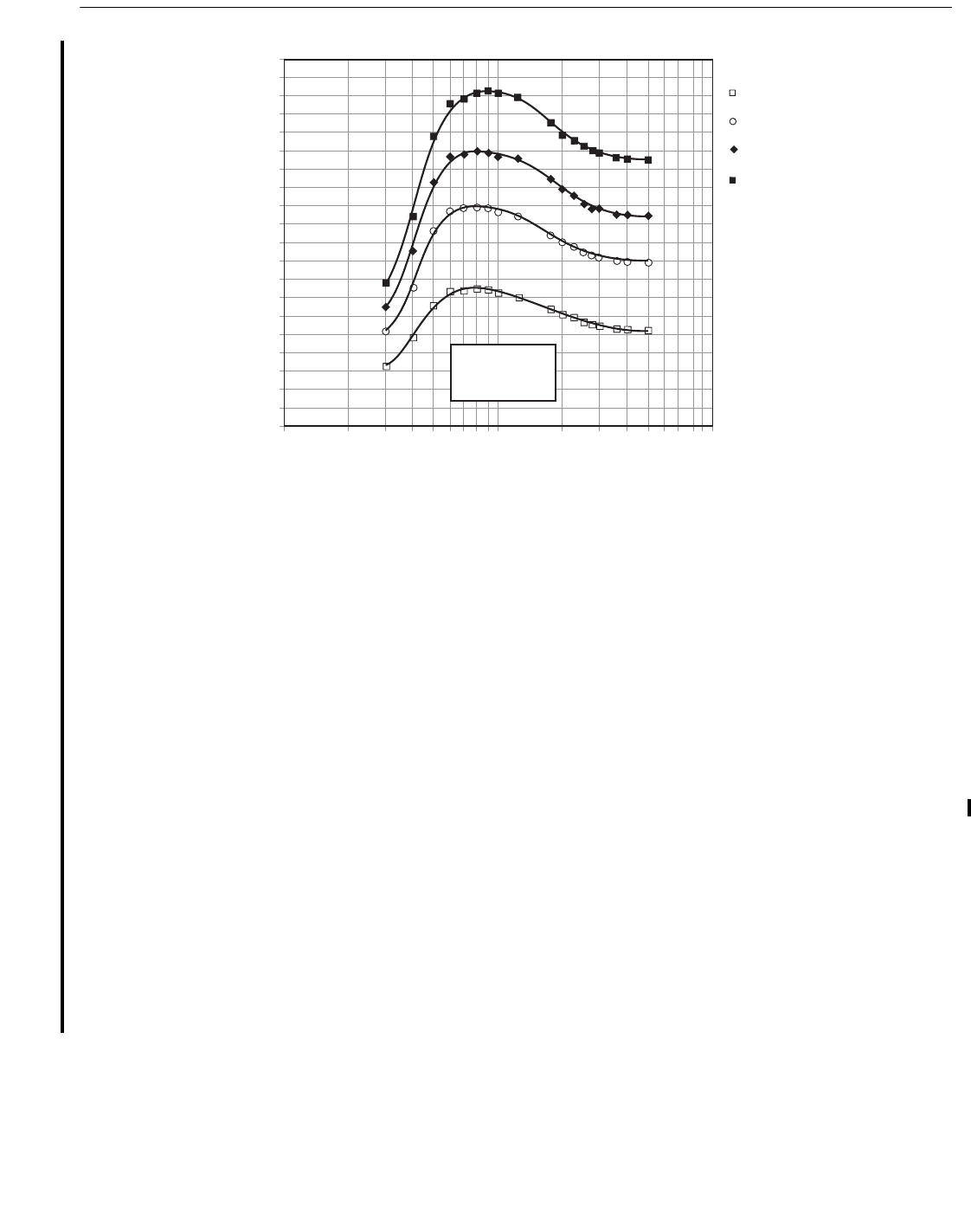
RECOMMENDED PRACTICE FOR PLANNING, DESIGNING AND CONSTRUCTING FIXED OFFSHORE PLATFORMS—WORKING STRESS DESIGN 123
be equal to the platform leg diameter at the storm mean
water level. If the forces are equal to or exceed that in
Figure 17.6.2-1, the platform forces are considered
consistent with 9th Edition requirements.
A more accurate approach is to build a hydrody-
namic model of the structure and compare the base
shear using the original design criteria with the base
shear that is consistent with the 9th Edition reference
level force. The 9th Edition forces should be calculated
using the wave theory as recommended in 2.3.1b.2.
4. Design level and ultimate strength analyses:
a. A-1 High Assessment Category. The full hurricane
population applies. The metocean criteria are pro-
vided in Table 17.6.2-1. The wave height and storm
tide are functions of water depth; these are given in
Figure 17.6.2-2a. The minimum deck height is also a
function of water depth; this is shown in Figure
17.6.2-2b. The wave period, current speed, and wind
speed do not depend on water depth; these are pro-
vided in Table 17.6.2-1.
If the underside of the cellar deck is lower than
the deck height requirement given in Figure 17.6.2
2b, then an ultimate strength analysis will be required.
For design level analysis, omni-directional crite-
ria are specified. The associated in-line current is
given in Table 17.6.2-1 and is assumed to be constant
for all directions and water depths. For some noncrit-
ical directions, the omni-directional criteria could
exceed the design values of this recommended prac-
tice, in which case the values of this recommended
practice will govern for those directions. The current
profile is given in 2.3.4c.4. The wave period, storm
tide, and wind speed apply to all directions.
For ultimate strength analysis, the direction of
the waves and currents should be taken into account.
The wave height and current speed direction factor,
and the current profile should be calculated in the
same manner as described in 2.3.4c.4. The wave
period and wind speed do not vary with water depth.
Wave/current forces on platform decks should be
calculated using the procedure defined in C17.6.2.
b. A-2 Medium Assessment Category: The combined
sudden hurricane and winter storm population
applies. The metocean criteria (referenced to the
sudden hurricane population) are provided in Table
17.6.2-1. The wave height and storm tide are func-
tions of water depth; these are shown in Figure
17.6.2-3a. The required deck height is also a func-
tion of water depth; this is given in Figure 17.6.2-3b.
The wave period, current speed, and wind speed do
not vary with water depth; these are provided in
Table 17.6.2-1.
If the underside of the cellar deck is lower than
the deck height requirement given in Figure 17.6.2-
3b, then an ultimate strength analysis will be
required.
For design level analysis, the metocean criteria
are based on the 100-year force due to the combined
Figure 17.6.2-1—Base Shear for a Vertical Cylinder Based on API Recommended Practice 2A, 9th Edition
Reference Level Forces
0 100 1000
30 in. OD Cylinder
48 in. OD Cylinder
60 in. OD Cylinder
72 in. OD Cylinder
0
50
100
150
200
Base Shear, kips
MLLW, ft
.
.
.
.
.
.
.
.
.
.
.
.
.
.
.
.
.
.
.
.
.
.
.
.
.
.
.
.
.
.
.
.
.
.
.
.
.
.
Special studies
required for
MLLW < 40 ft
05
05
05
Copyright American Petroleum Institute
Provided by IHS under license with API
Licensee=Indonesia location/5940240008
Not for Resale, 10/22/2008 00:07:12 MDT
--`,,```,,,`,,,,,,,,,,,,,,`,``,`-`-`,,`,,`,`,,`---
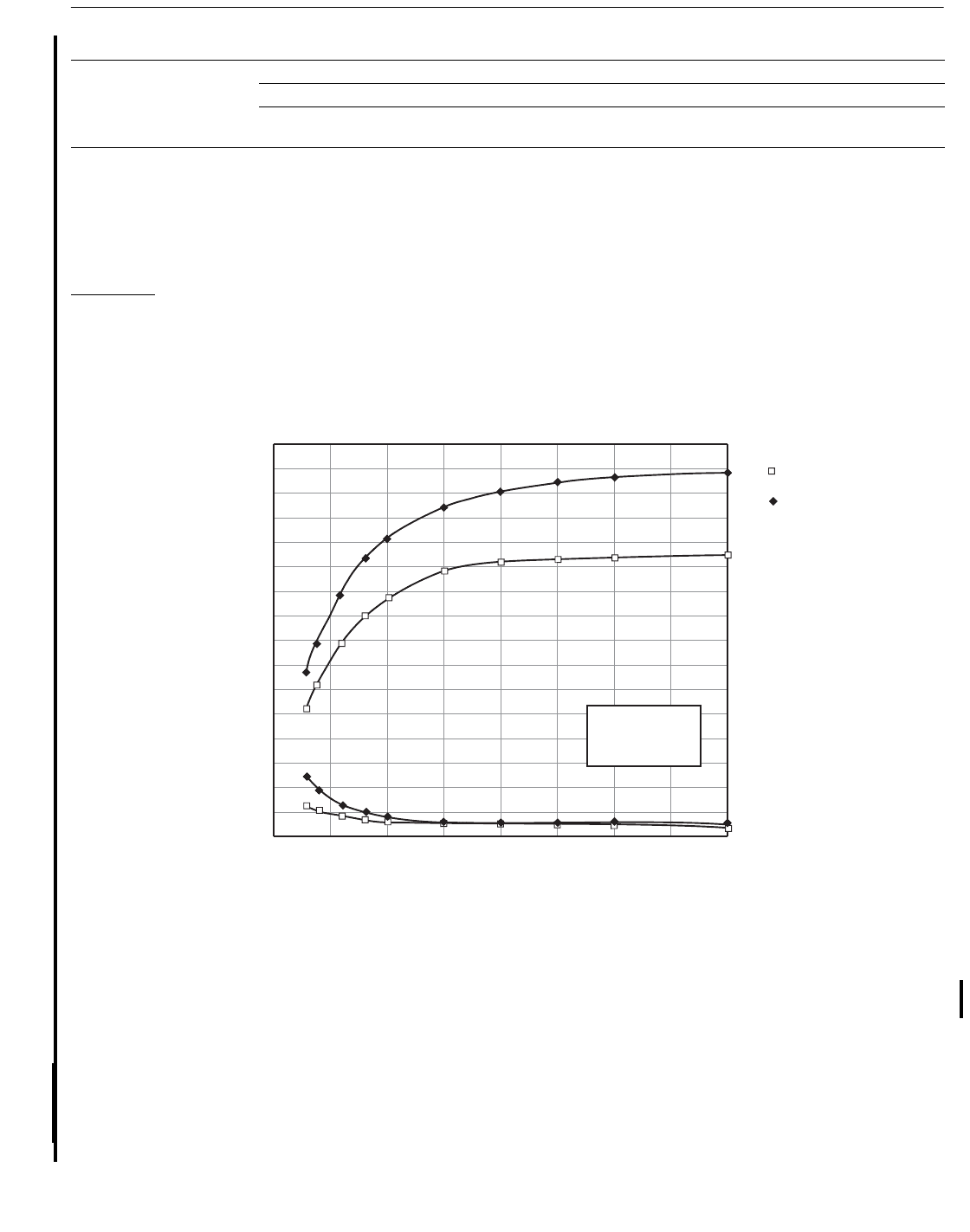
124 API RECOMMENDED PRACTICE 2A-WSD
sudden hurricane and winter storm population.
Omni-directional criteria are specified. The associ-
ated in-line current is given in Table 17.6.2-1 and is
assumed to be constant for all directions and water
depths. For some noncritical directions, the omni-
directional criteria could exceed the ultimate
strength analysis values, in which case the ultimate
strength analysis values will govern for those direc-
tions. The current profile is given in 2.3.4c.4. The
wave period, storm tide, and wind speed apply to all
directions. Although the criteria are based on both
sudden hurricanes and winter storms, the wave
forces should be calculated using a wave kinematics
factor of 0.88 because the criteria are referenced to
the sudden hurricane population.
Table 17.6.2-1—U.S. Gulf of Mexico Metocean Criteria
Criteria
A-1 A-2 A-3
Full Population Hurricanes Sudden Hurricanes Winter Storms
Design Level
Analysis
Ultimate Strength
Analysis
Design Level
Analysis
Ultimate Strength
Analysis
Design Level
Analysis
Ultimate Strength
Analysis
Wave height and storm tide, ft Fig. 17.6.2-2a Fig. 17.6.2-2a Fig. 17.6.2-3a Fig. 17.6.2-3a Fig. 17.6.2-5a Fig. 17.6.2-5a
Deck height, ft Fig. 17.6.2-2b Fig. 17.6.2-2b Fig. 17.6.2-3b Fig. 17.6.2-3b Fig. 17.6.2-5b Fig. 17.6.2-5b
Wave and current direction Omni-directional* Fig. 2.3.4-4 Omni-directional** Fig. 17.6.2-4 Omni-directional Omni-directional
Current speed, knots 1.6 2.3 1.2 1.8 0.9 1.0
Wave period, seconds 12.1 13.5 11.3 12.5 10.5 11.5
Wind speed (1 hr @ 10 m), knots 65 85 55 70 45 50
Note: ft = feet; hr = hour; m = meters.
*If the wave height or current versus direction exceeds that required by Section 2, L-1 criteria for new designs, then the Section 2 criteria will govern.
**If the wave height or current versus direction exceeds that required for ultimate-strength analysis, then the ultimate-strength criteria will govern.
Figure 17.6.2-2a—Full Population Hurricane Wave Height and Storm Tide Criteria
0
0
10
20
30
40
50
60
70
80
100 200 300 400
Wave Height and Storm Tide, ft
MLLW, ft
.
.
.
.
.
.
.
.
.
.
.
.
.
.
.
.
.
.
.
.
.
Design Level
Ultimate Str
Special studies
required for
MLLW < 30 ft
05
05
Copyright American Petroleum Institute
Provided by IHS under license with API
Licensee=Indonesia location/5940240008
Not for Resale, 10/22/2008 00:07:12 MDT
No reproduction or networking permitted without license from IHS
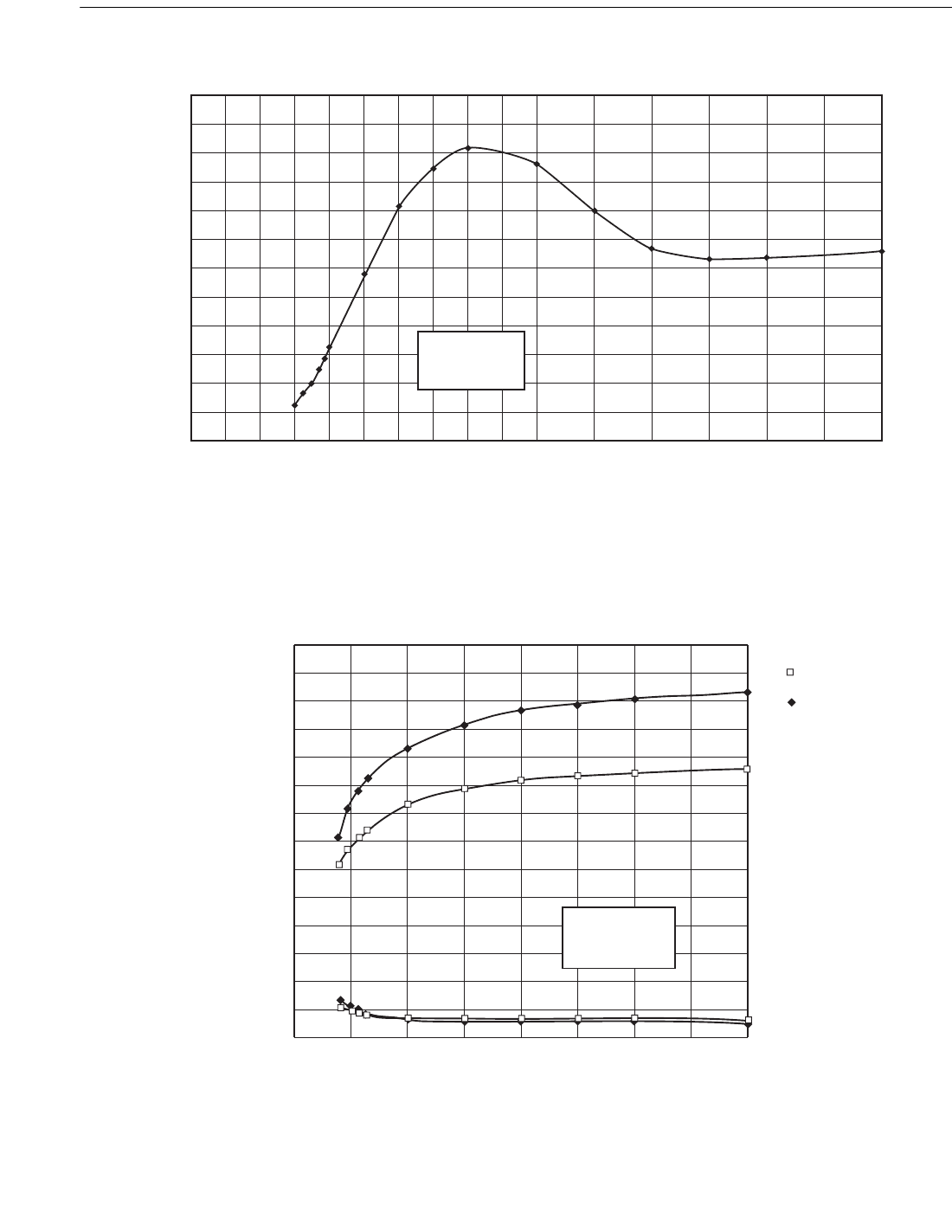
RECOMMENDED PRACTICE FOR PLANNING, DESIGNING AND CONSTRUCTING FIXED OFFSHORE PLATFORMS—WORKING STRESS DESIGN 125
Figure 17.6.2-2b—Full Population Hurricane—Minimum Elevation of Underside of the Cellar Deck
Figure 17.6.2-3a—Sudden Hurricane Wave Height and Storm Tide Criteria
38
0 20 40 60 80 100
200
300 400
40
42
44
46
48
50
MLLW, ft
Deck Height, ft
Special studies
required for
MLLW < 30 ft
0
0
10
20
30
40
50
60
70
100 200 300 400
Wave Height and Storm Tide, ft
MLLW, ft
.
.
.
.
.
.
.
.
.
.
.
.
.
...
.
.
.
.
.
Design Level
Ultimate Str
Special studies
required for
MLLW < 40 ft
Copyright American Petroleum Institute
Provided by IHS under license with API
Licensee=Indonesia location/5940240008
Not for Resale, 10/22/2008 00:07:12 MDT
--`,,```,,,`,,,,,,,,,,,,,,`,``,`-`-`,,`,,`,`,,`---
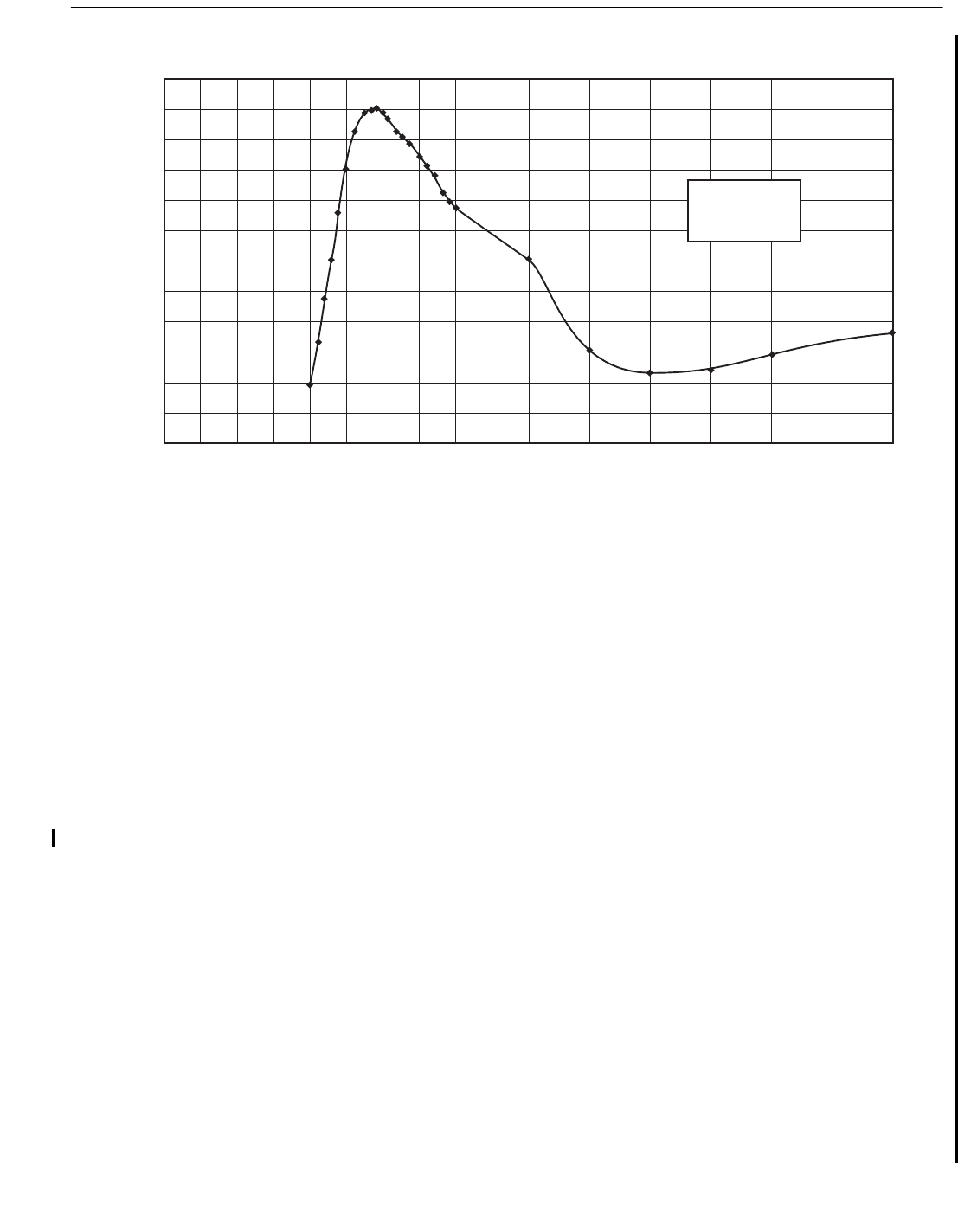
126 API RECOMMENDED PRACTICE 2A-WSD
For ultimate strength analysis, the direction of
the waves and currents should be taken into
account. The wave height, associated current and
profile, as a function of direction, should be calcu-
lated in the same manner as described in 2.3.4c.4,
except that the directional factors should be based
on Figure 17.6.2-4. The wave period and wind
speed do not vary with water depth. Wave/current
forces on platform decks should be calculated using
the procedure defined in C17.6.2.
c. A-3 Low Assessment Category: The winter storm
population applies. The metocean criteria are pro-
vided in Table 17.6.2-1. The wave height and storm
tide are functions of water depth; these are shown in
Figure 17.6.2-5a. The required deck height is also a
function of water depth; this is given in Figure
17.6.2-5b. The wave period, current speed, and wind
speed do not vary with water depth; these are pro-
vided in the Table 17.6.2-1.
If the underside of the cellar deck is lower than
the deck height requirement given in Figure
17.6.2-5b, an ultimate strength analysis will be
required.
For both design level and ultimate strength anal-
ysis, the wave height criteria are omnidirectional.
The associated in-line current is provided in Table
17.6.2-1 and is assumed to be constant for all direc-
tions and water depths. The current profile should be
the same as in Section 2.3.4c.4. The wave period,
storm tide, and wind speed apply to all directions.
Wave/current forces on platform decks should be
calculated using the procedure defined in Section
C17.6.2.
17.6.2.b U.S. West Coast Criteria
For platforms on the U.S. West Coast, the following crite-
ria apply:
1. Metocean systems: The extreme waves are dominated
by extratropical storm systems. In calculating wave
forces based on Section 2.3, a wave kinematics factor
of 1.0 should be used.
2. Deck height check: The deck height for determining
whether or not an ultimate strength check will be
needed should be developed on the same basis as pre-
scribed in Section 17.6.2a.2. The ultimate strength
wave height should be determined on the basis of the
acceptable RSR. The ultimate strength storm tide may
be lowered from that in Table 17.6.2-2 to take into
account the unlikely event of the simultaneous occur-
rence of highest astronomical tide and ultimate
strength wave.
Figure 17.6.2-3b—Sudden Hurricane—Minimum Elevation of Underside of the Cellar Deck
35
0 20 40 60 80 100
200
300 400
36
37
38
39
40
41
MLLW, ft
Deck Height, ft
Special studies
required for
MLLW < 40 ft
00
05
Copyright American Petroleum Institute
Provided by IHS under license with API
Licensee=Indonesia location/5940240008
Not for Resale, 10/22/2008 00:07:12 MDT
--`,,```,,,`,,,,,,,,,,,,,,`,``,`-`-`,,`,,`,`,,`---
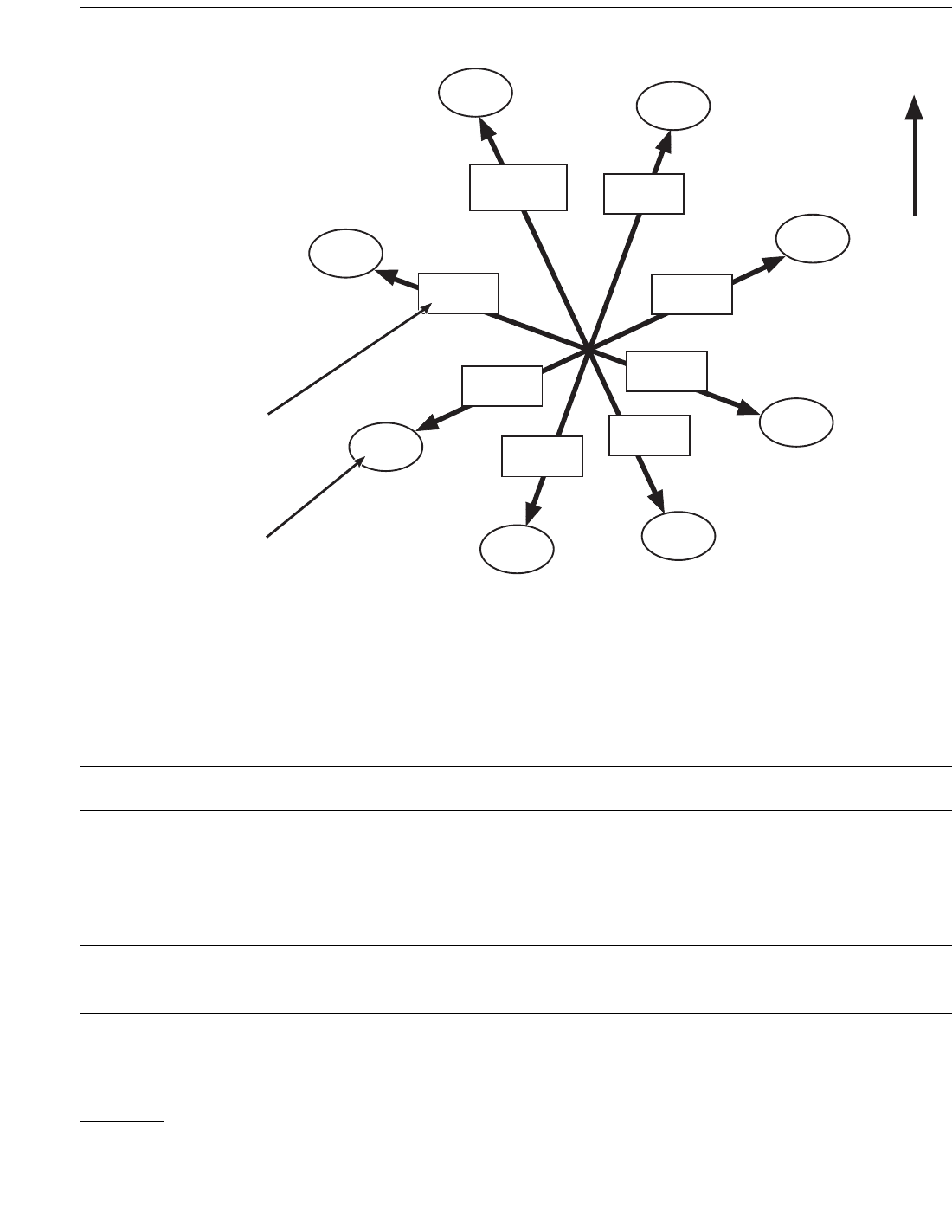
RECOMMENDED PRACTICE FOR PLANNING, DESIGNING AND CONSTRUCTING FIXED OFFSHORE PLATFORMS—WORKING STRESS DESIGN 127
Figure 17.6.2-4—Sudden Hurricane Wave Directions and Factors to Apply to the Omni-directional Wave
Heights in Figure 17.6.2-3a for Ultimate Strength Analysis
Table 17.6.2-2—100-Year Metocean Criteria for Platform Assessment U.S. Waters (Other Than Gulf
of Mexico), Depth > 300 feet
Santa Barbara Channel Wave Height (ft) Current (kts) Wave Period (sec) Storm Tide (ft)
Wave Speed, kts
(1 hr @ 33 ft)
120° 30´ W 50114655
120° 15´ W 43113650
120° 00´ W 39112650
119° 45´ W and further east 34 1 12 6 45
San Pedro Channel
118° 00´ to 118° 15´ 43 1 13 6 50
Central California
West of Point Conception56114760
West of Point Arguello 60114765
Note: ft = feet; kts = knots; sec = seconds; hr = hour.
335¡
20¡
65¡
110¡
155¡
200¡
245¡
290¡
1.00
0.95
0.85
N
0.70
0.70
0.70
0.75
0.90
Wave direction
(towards, clockwise from N)
±22.5¡ typical
Factor
Copyright American Petroleum Institute
Provided by IHS under license with API
Licensee=Indonesia location/5940240008
Not for Resale, 10/22/2008 00:07:12 MDT
--`,,```,,,`,,,,,,,,,,,,,,`,``,`-`-`,,`,,`,`,,`---
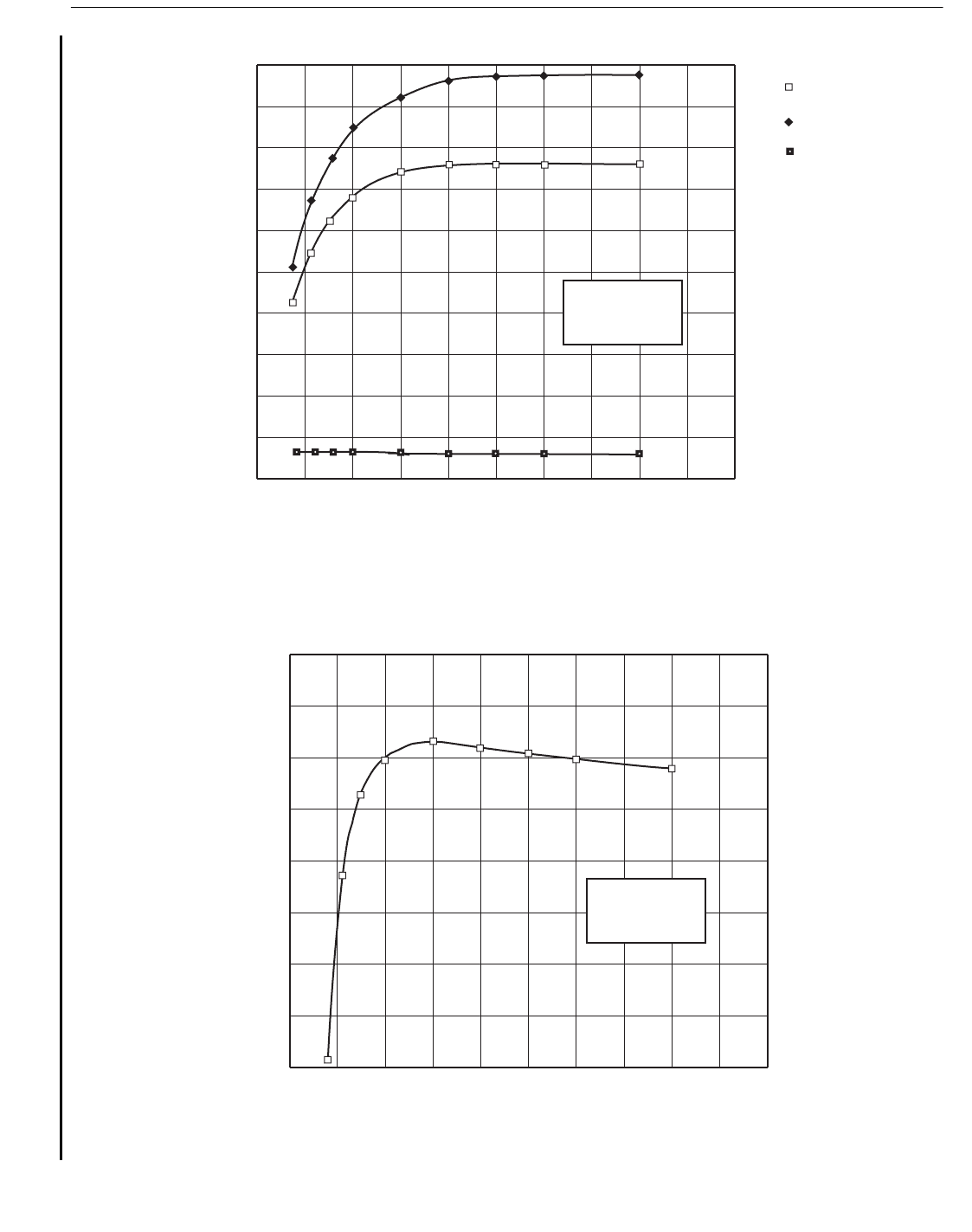
128 API RECOMMENDED PRACTICE 2A-WSD
Figure 17.6.2-5a—Winter Storm Wave Height and Storm Tide Criteria
Figure 17.6.2-5b—Winter Storm—Minimum Elevation of Underside of the Cellar Deck
0
10
20
30
40
50
Wave Height and Storm Tide, ft
0 100 200 300 400 500
MLLW, ft
.
.
..
.
.
.
.
.
.
Design Level
Ultimate Strength
ULT
Special studies
required for
MLLW < 40 ft
05
24
26
28
30
32
Deck Height, ft
0 100 200 300 400 500
MLLW, ft
.
.
.
.
.
.
.
.
.
Special studies
required for
MLLW < 40 ft
Copyright American Petroleum Institute
Provided by IHS under license with API
Licensee=Indonesia location/5940240008
Not for Resale, 10/22/2008 00:07:12 MDT
No reproduction or networking permitted without license from IHS
